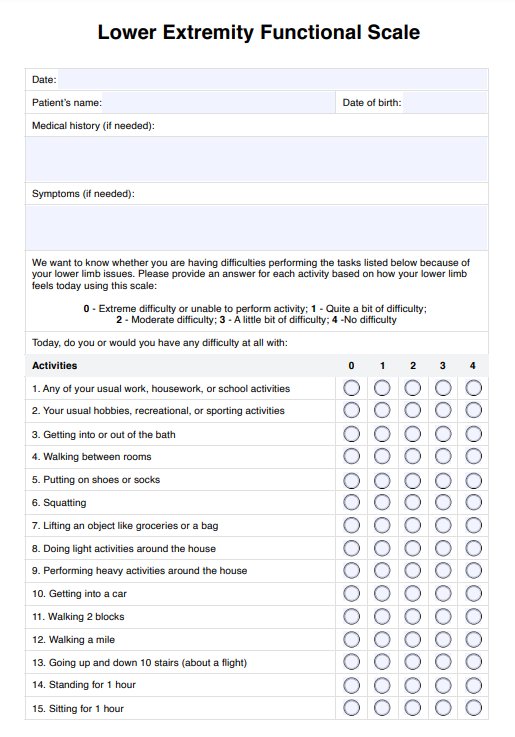Healthcare professionals use LEFS to measure how well someone can do activities related to their lower body. It assesses an individual's ability to perform tasks such as walking, climbing stairs, and squatting.

Lower Extremity Functional Scale
Measure your patient's functional status with lower extremity impairments and track their progress using our free Lower Extremity Functional Scale assessment.
Use Template
Lower Extremity Functional Scale Template
Commonly asked questions
The LEFS scores range from 0 to 4. To score LEFS, you must add the total number of points rated by the patient for each activity. A lower score indicates greater disability, while a higher score suggests better functional ability.
The LEFS should be completed regularly every six weeks or before and after physical therapy interventions.
EHR and practice management software
Get started for free
*No credit card required
Free
$0/usd
Unlimited clients
Telehealth
1GB of storage
Client portal text
Automated billing and online payments











